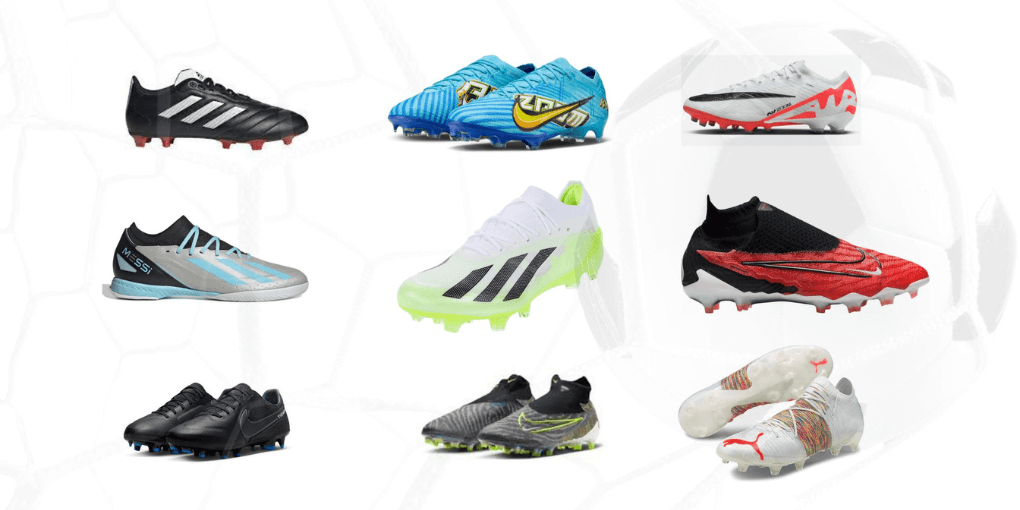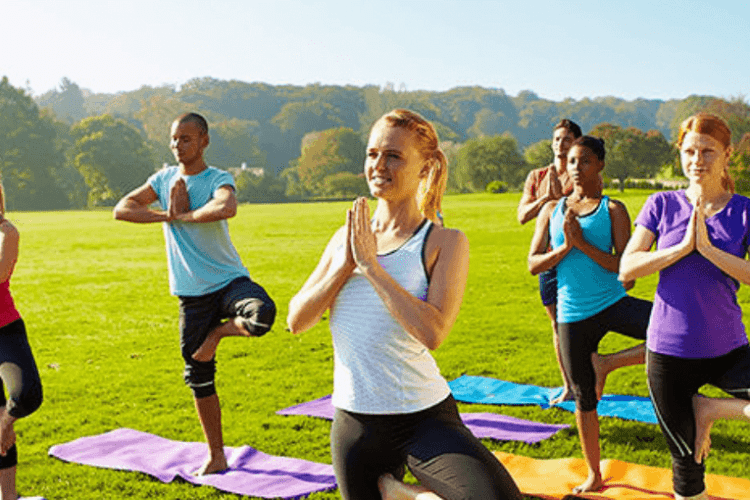Cleats for Different Age Groups: Youth, Adult, and Senior
Did you know that soccer cleats are not only about looks but also about providing the right support for different age groups? When it comes to soccer cleats, one size does not fit all.

According to a recent study, over 60% of soccer players wear cleats that are either too small or too big. It leads to discomfort and potential injuries.
As a soccer player, I understand the excitement and importance of having the right gear for the game.
Legendary soccer player Mia Hamm once said, “The right shoe can change your game.” This is true for players of every age.
In this blog post, we’ll dive into the world of soccer cleats tailored for youth, adult, and senior players.
So, are you ready to kick off your soccer game in style? Lace up your cleats and get ready to score goals like a pro!
Know About the Anatomy of Soccer Cleats
Understanding the different parts of soccer cleats will help you choose the right pair based on different age groups.
- Upper Material: The top part of soccer cleats is the upper part. It’s usually made of synthetic leather or mesh materials. The upper material helps protect your feet and provides a comfortable fit while you play.
- Studs or Cleats: The bottom of soccer cleats has studs or cleats that grip the ground well. These studs come in different shapes and lengths for various playing surfaces, like grass, turf, or indoors.
- Insole: The insoles inside the cleats cushion your feet and absorb shock when you run and kick the ball. The insole needs to be soft and supportive to prevent discomfort and injuries.
- Midsole: Some soccer cleats have a midsole. It adds extra cushioning and support to the arch of your foot. This helps distribute your weight evenly and reduces strain on your feet during long games.
- Outsole: The outsole is the outer layer of the cleats’ bottom that touches the ground. It’s often made of tough materials like rubber or plastic to give you grip and stability when you play.
- Lacing System: The lacing system on soccer cleats allows you to adjust the tightness for a secure fit. Make sure to tie your laces properly to prevent discomfort during games.
- Toe Box: The front part of soccer cleats is called the toe box, where your toes stay. The toe box needs to have enough space to keep you comfortable and avoid squashing your toes during play.
- Heel Counter: The back part of soccer cleats has a heel counter. It provides stability and prevents your foot from slipping out.
Tips for Choosing the Right Soccer Cleats for Different Age Groups
Wearing the right soccer cleats can improve a player’s speed and agility on the field by up to 25%!
So, the right soccer cleats can boost your game and make playing soccer even more enjoyable. By following these tips, you can find the perfect pair for you:
- Size Matters: Make sure your cleats are the right size for your feet. They shouldn’t be too tight or too loose. You should check the size chart or try them on with soccer socks to ensure a comfortable fit.
- Playing Surface: You need to consider the surface you’ll be playing on, like grass, turf, or indoors. Choose cleats with studs or patterns suitable for that surface. For indoor games, you can look for flat-soled cleats to grip the indoor surface better.
- Comfort is Key: You should look for cleats with cushioned insoles and padded collars. These will provide you with extra comfort during long games.
- Durability and Support: For longer use, you should choose cleats made of durable materials like synthetic leather or mesh. You can look for cleats with a sturdy heel counter and midsole for extra support.
- Flexibility and Agility: You should look for flexible cleats. It’ll allow you to make quick movements on the field. Also, consider cleats with lightweight materials that won’t slow you down when you’re running and dribbling.
- Try Before You Buy: Always try on cleats before buying them. It’ll help you to ensure they feel comfortable and supportive on your feet.
- Consult with Experts: If you’re unsure about which cleats to choose, ask your soccer coach for advice. They can recommend cleats based on different age groups, playing positions, and specific needs.
Soccer Cleats for Youth Players (Ages 5-12)
The wrong soccer cleat can raise the risk of injury, especially for youth soccer players.
By considering these factors, you can enjoy your time on the field and perform at your best.
Size and Fit
Choose soccer cleats that are the right size for your feet. You should look for cleats with adjustable features. For example, straps or laces for a customized fit as your feet grow.
Durability and Protection
You should look for cleats made from strong materials like synthetic leather or sturdy mesh. It’ll handle rough play and last a long time.
You also need to check for padded collars and toe caps to protect your feet from impacts and injuries.
Traction and Grip
Select cleats with rubber outsoles designed for grass or turf surfaces. Good traction and grip will help you stay balanced on the field.
Comfort Features
You should look for cleats with cushioned insoles and breathable linings. They’ll keep your feet comfortable and dry during games.
Easy to Maintain
You should look for cleats that are easy to clean and maintain. Especially if you play in muddy or wet conditions.
You must remove dirt and mud after each game and let your cleats air dry to expand their lifespan.
Consult with Coaches or Parents
You should ask your soccer coach or parents for guidance. They can help you choose the right cleats for your age group and playing style.
Know About Adult Soccer Cleats (Ages 13-35)
By considering these factors, you’ll be able to find adult soccer cleats for you:
- Size and Fit: You should avoid cleats that are too loose or tight for your feet. So, try to choose one that fits comfortably and securely on your feet.
- Playing Surface: You must consider the playing surface. It can be grass, turf, or indoor courts. So, choose cleats with the appropriate studs or patterns for that surface.
- Durability: For regular use, you should look for durable materials. For example, leather or synthetic materials can be a good option for you.
- Traction and Stability: Select cleats with studs or patterns that offer good traction and stability on the field. This helps prevent slipping and allows for quick changes in direction.
- Comfort Features: You should choose cleats with cushioned insoles and padded collars. They will give you comfort during long matches. Also, look for breathable materials to keep your feet cool and dry.
- Style and Design: You can choose cleats in your favorite colors or designs. You can also match your cleats to your soccer uniform or personal style.
Soccer Cleats for Senior Players (Ages 35+)
Athletic therapist Melanie Fiala says the wrong soccer cleat can damage ligaments. So, you must choose your soccer cleats based on different age groups.
Comfort and Support
You should choose cleats that focus on comfort and support for older feet. You can look for cushioned insoles and padded collars to reduce strain.
Adjustable Features
You can select cleats with adjustable features like straps or laces. They allow you to customize the fit according to your foot shape and comfort level.
These are great as they can adapt to any changes in foot size or shape as you age.
Lightweight Materials
You must choose cleats made of lightweight materials. They help reduce the weight and strain on your feet.
Lightweight cleats also make it easier for you to move around the field comfortably.
Strong Construction
You should look for cleats with strong construction and reinforced areas. For example, toe caps and heel counters oppose wear and tear over time. So, find cleats with a tough outsole and studs that work on different playing surfaces.
Breathable Design
Breathable material cleats help keep your feet cool and dry during matches. Also, proper ventilation reduces the risk of discomfort during longer games.
Style and Design
Some cleats offer customization options. For example, you can add your initials or team logo for a personalized touch. You can also add your favorite color or design to it.
Consult with Professionals
You can ask experts for advice on picking cleats that suit your needs. Their guidance can help you find shoes that improve comfort, performance, and safety on the field. To find best work shoes you can visit Mohaimenul.com for ultimate guideline.
Key Differences Across Different Age Groups
Understanding these key differences helps you choose soccer cleats that suit your preferences.
1. Size and Fit
- Youth Soccer Cleats: These come in smaller sizes. Also, they often have adjustable features to fit growing feet.
- Adult Soccer Cleats: These come in standard sizes and offer a snug fit for better performance.
- Senior Soccer Cleats: These cleats focus on comfort and adjustable features for older feet.
2. Design and Construction
- Youth Soccer Cleats: Youth cleats focus on durability and protection for active play.
- Adult Soccer Cleats: Adult cleats feature advanced technology for enhanced performance. For example, it provides you with improved traction and support.
- Senior Soccer Cleats: Senior cleats mainly focus on comfort features. It provides cushioning and arch support, with sturdy construction for long games.
3. Stud Configuration
- Youth Soccer Cleats: These cleats have shorter studs or molded patterns. These are suitable for various playing surfaces.
- Adult Soccer Cleats: Adult cleats have customizable studs for different playing positions and field conditions.
- Senior Soccer Cleats: Senior cleats are made for stability and grip. They have special studs or designs to help prevent slipping on the field.
4. Material Choices
- Youth Soccer Cleats: Youth cleats are made of synthetic materials for affordability. These materials are durable and simple to clean after each game.
- Adult Soccer Cleats: Adult cleats use top-notch materials like leather for durability. They’re designed to perform well and last a long time on the field.
- Senior Soccer Cleats: These cleats are made with lightweight and breathable materials. They help to reduce fatigue and discomfort while playing. These features help older players stay comfortable and focused on the game.
Care and Maintenance Tips for Soccer Cleats
By following these simple tips, players of all age groups can keep their gear in top condition:
Cleaning After Use
You can use a soft brush or cloth to remove dirt and mud from your cleats after each game.
To keep your cleats performing well, you can gently clean the outsoles and upper parts. This helps maintain their durability over time.
Air Dry Thoroughly
After cleaning, allow your cleats to dry naturally in a well-ventilated area. Keep it away from direct sunlight or heat sources, as excessive heat can damage the materials.
Remove Insoles and Laces
You can take out the insoles and laces from your cleats to clean and air them separately. This helps prevent odors and ensures your cleats stay fresh and comfortable.
Store Properly
You should store your cleats in a cool, dry place when not in use to prevent moisture buildup and mold growth. You can use a shoe bag to protect your cleats from dust and damage.
Regular Inspections
You should check your cleats regularly for any signs of wear and tear. For example, worn outsoles, loose stitching, or damaged studs.
If you find any issues, fix them immediately to keep your cleats in good shape.
Replace When Necessary
If your cleats are showing signs of wear, like flat studs or ripped parts, it might be time to get new ones. New cleats are better for playing and protecting your feet.
Conclusion
In conclusion, the right soccer cleats are essential for players of different age groups.
No matter your age or experience level, the right cleats can make a big difference in your game.
So, you must choose cleats that fit well, provide support, and suit your playing style and age group.
With the right cleats, you can enjoy soccer safely and confidently.
So, lace up your cleats, hit the field, and have a great time playing this beautiful game!
FAQs
Soccer cleats provide better traction and support while playing soccer. It also helps you run, kick, and move more effectively on the field.
It's a good idea to clean your cleats after every game or practice to get rid of dirt and keep them in good shape. Regular cleaning helps maintain their condition and ensures they last longer.
Yes, you can customize them by picking colors and adding your name or number of your preferences.
If your cleats hurt or feel uncomfortable, you can try adjusting how they fit. You might also want to think about getting new cleats that offer more support and comfort.


